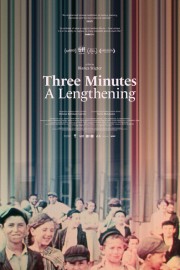Three Minutes: A Lengthening
Three minutes of film can tell an entire story. Sometimes, however, it might need context to do so. One of the wonders of “Three Minutes: A Lengthening” is that it approaches the footage as something greatly important. By giving context back to these images, we learn about life, death and the importance of preserving film. Without these images, histories might have been lost.
It’s unlikely musician Glenn Kurtz’s grandfather thought about any of this when he was filming these three minutes when his family was on vacation in Europe in 1938. But when Kurtz came across it in 2009, he knew the significance by virtue of what had happened in WWII, which was set to start a year later. Only a handful of these faces would survive the Holocaust. One survivor was Morris Chandler, who was 13 when the footage was shot; after the film had been restored, and put on the U.S. Holocaust Memorial Museum website, Morris watched it with his granddaughter, who reached out to Kurtz. His is one of the voices we hear on the soundtrack of “Three Minutes: A Lengthening.” The others are Kurtz’s, and Helena Bonham Carter, who serves as the film’s narrator.
The film is shown immediately, without any words above it, and what we see is not like many images of Jewish faces we see on film from this era- there are smiles, people showing joy and excitement, and people just enjoying life. Of course, this is before the Nazis would begin their liquidation and the Holocaust. That being said, one can’t help but admire Kurtz’s grandfather for understanding the power of the camera, and giving us these images to cherish. It seems like fate that Kurtz would find it, and be able to get in touch with Chandler, so that they could help bring context to the story being told by the camera. This isn’t just footage of a vacation; this is an unexpected piece of history. Three minutes of film can tell an entire story. This one captures a moment we never expected to see again. It’s haunting, and humane. It’s art.










